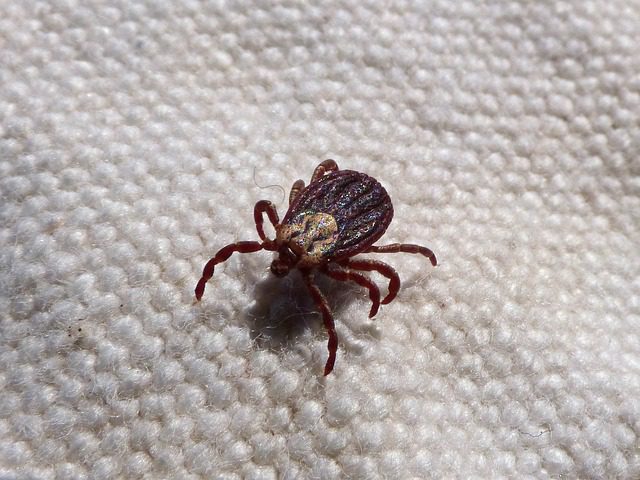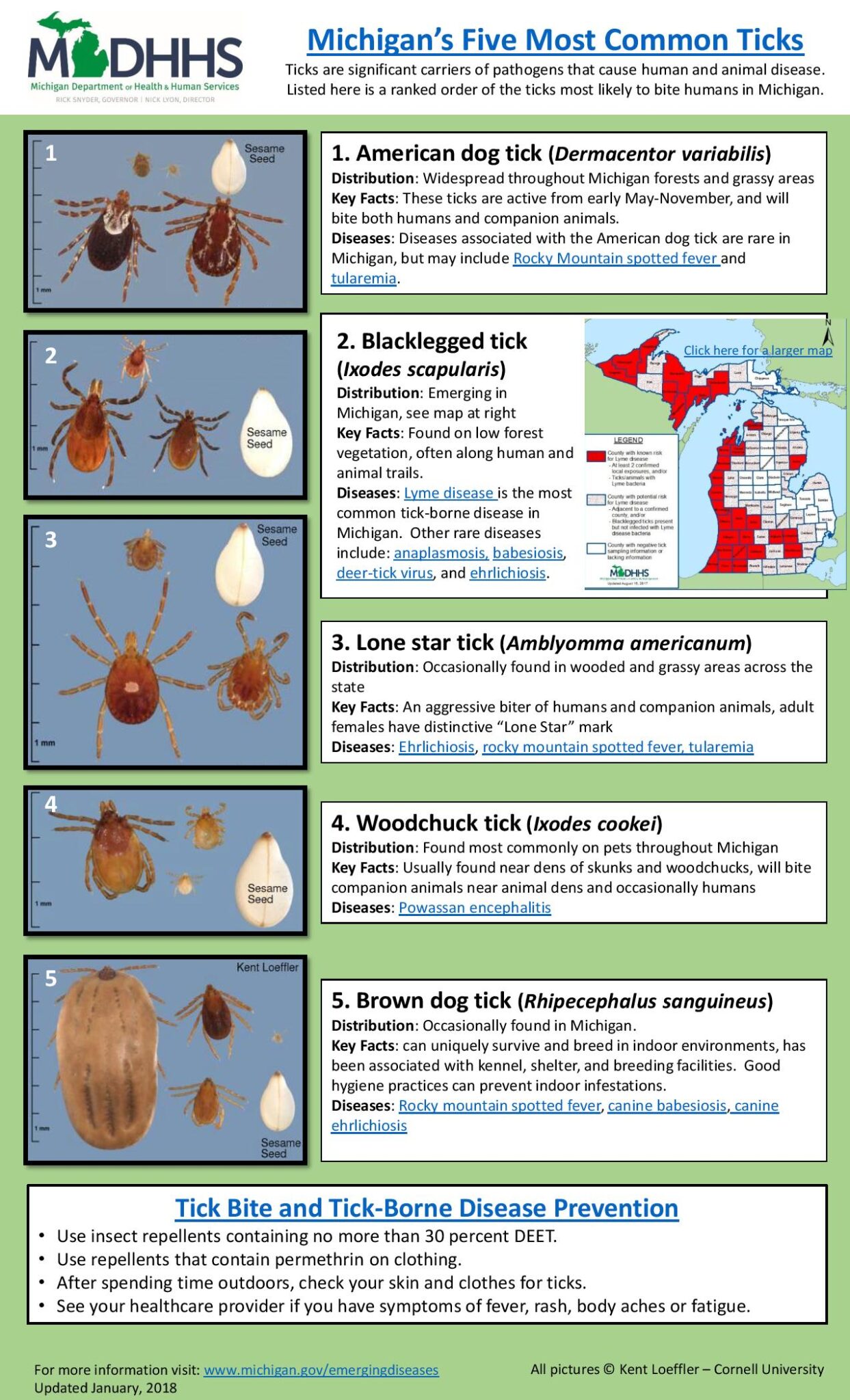
by Taryn Clark, DVM
Unfortunately, it’s tick season again. Which also means that it’s time to start writing about those nasty little bloodsuckers again. And to check for ticks on ourselves and pets when coming in from outside, to make sure our pets have tick preventives, to… you get the idea. With spring here, ticks are once again on the rise in Michigan, and their population is growing.
Ticks are parasites that can cause disease in humans and many other host animals like our dogs and cats. They are typically found in wooded or grassy areas, especially near rivers, lakes or oceans. The two most common ticks found in our area are the American dog tick, which are most abundant in the spring and early summer, and the blacklegged tick (also known as the deer tick) which we see from spring all the way into the fall.
Lyme disease
Ticks have the ability to transmit disease like Lyme disease, tularemia, anaplasma, Rocky Mountain spotted fever and ehrlichiosis. In Michigan the most common infection we see is Lyme disease which is caused by a bacterium called Borrelia burgdorferi. This disease is transmitted to people and animals by the bite of the blacklegged tick. Blacklegged ticks acquire the bacteria by feeding on infected small mammals and birds. Fortunately the tick must be attached for at least 24 to 48 hours for the bacteria to be transmitted. So be sure to do tick checks! Ticks can be transferred to humans from pets coming into the household from outside.
In the past two decades, Lyme disease has been steadily on the rise in Michigan from an average of 30 people a year infected to more than 300, and that number may be undercounted.
Pets infected with Lyme disease may not exhibit any signs at all or symptoms can be delayed for up to 2-5 months. Symptoms of active Lyme infection are fever, lethargy, vomiting, visual impairment, abnormal breathing, neurological signs, lymphadenopathy, loss of appetite, joint swelling or lameness, decreased activity and kidney failure.
Prevention
Ask your veterinarian about products that can help prevent ticks from making your pet their next home and host. Using a reliable tick-preventive product is the best way to prevent Lyme disease in your pets. Here at Ann Arbor Animal Hospital we carry multiple types, ranging from oral products to topical medications to treated collars. The Lyme vaccine is also an option. Your veterinarian may make that recommendation depending on where you live, your pet’s lifestyle, overall health and other factors.
Cats are extremely sensitive to a variety of chemicals like permethrin or pyrethroid, which are used to combat ticks. Do not apply any tick prevention products to your cat without consulting your veterinarian.
How do I deal with ticks?
Avoiding areas where ticks might be found is the best prevention; otherwise, checking for ticks on both yourself and your pets are recommended when you come in from the outdoors. Some places ticks like to hide on your pet are in and around the ears, on the eyelids, under the collar, under the front legs, around the tail and anus, and between the back legs and toes.
If you find a tick, remove it right away. Put on latex or rubber gloves, use a tweezer with a fine tip and grasp the tick by the head as close to the skin as possible then gently, but firmly, pull it straight out. Immediately wash the bite area and your hands with soap and water.
To dispose of the tick, place it in rubbing alcohol in a concealed container. Monitor the bite area over the next few weeks for any signs of redness or inflammation.
Identification
Tick identification is available at a number of state agencies. Contact your local health department environmental health division office for a tick submission kit.
To help identify a tick you’ve found on your pet or yourself, look at the image below. If you can’t ID it from that, you can visit the Michigan government website for instructions on how to submit your tick pictures for identification.

Testing for Lyme, and treatment
Our annual blood testing for heartworm disease does include Lyme/Ehrlichia/Anaplasmosis testing. If the test is positive for one of the above tick borne diseases, we typically recommend follow up labwork to confirm in order to make further recommendations. A positive test means that they have been exposed to the bacterium, but does not necessarily mean that the pet is still actively infected.
Antibiotics may be recommended according to test results and the recommendations of your veterinarian (Doxycycline is typically recommended for approximately 30 days). The earlier the treatment is started, the more favorable the outcome. Sometimes a low level of bacteria may remain and can cause recurrent disease episodes.
Recent Posts
About Us
Ann Arbor Animal Hospital is a locally-owned animal hospital operating for over 90 years in Ann Arbor, MI.

